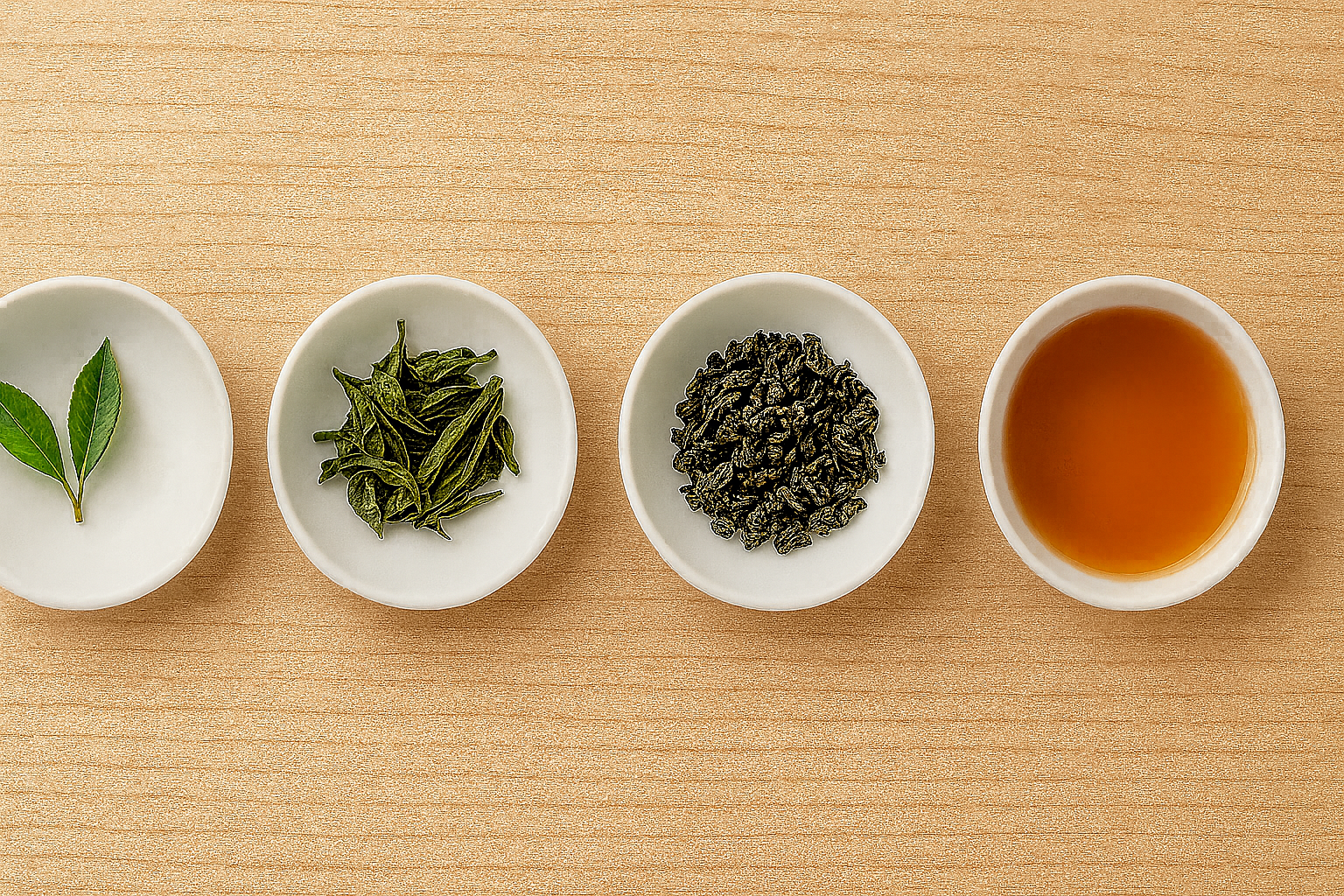The Journey of High-Quality Tea: From Leaf to Cup

Learn what your favorite brews go through to get to you.
A great cup of tea is more than a warm, fragrant comfort. It’s the culmination of a meticulous journey. The journey begins with tender leaves swaying in distant mountain gardens and ends with a perfectly brewed infusion in your hands. Every stage, from cultivation to brewing, shapes the flavor, aroma, and character of the tea you drink.
Let’s follow that journey step by step.
1. Cultivation: Where It All Begins
The story starts in the tea gardens, where altitude, climate, and soil (together known as terroir) determine a tea’s potential. High-quality teas are cultivated in regions where these elements work in harmony.
Notable tea-growing regions:
- China — The birthplace of tea, producing icons like Longjing green tea, Tie Guan Yin oolong, and Puerh dark tea.
- India — Robust Assam, delicate Darjeeling, and aromatic Nilgiri teas.
- Japan — Sencha, Matcha, and Gyokuro, celebrated for their umami-rich profiles.
- Taiwan — Renowned for high-mountain oolongs with floral and creamy complexity.
- Sri Lanka (Ceylon) — Brisk, citrus-toned black teas.
The finest estates often rely on sustainable farming, handpicking, and even shade-growing techniques to preserve purity and protect biodiversity.
2. Harvesting: The Art of the Pluck
Timing and technique define the raw material. The youngest leaves and buds yield the most refined flavor.
- Hand-picking — Skilled workers select only the finest leaves, ensuring consistency and minimizing damage.
- Machine harvesting — Efficient but less selective, often producing more broken leaves and harsher brews.
Seasonal influence:
- First Flush (Spring) — Delicate, floral, and light-bodied.
- Second Flush (Summer) — Fuller, richer, with fruit or honey-like notes.
- Autumn/Winter harvests — Often deeper and more oxidized, common in black and oolong teas.
3. Processing: Defining the Tea’s Identity
Once harvested, the leaves are transformed through a series of precise steps:
- Withering — Reduces moisture, softening the leaves for shaping.
- Rolling/Shaping — Breaks cell walls, releasing aromatic oils.
- Oxidation — For oolong and black teas, this stage develops color, strength, and body.
- Firing/Drying — Stops oxidation and locks in flavor.
- Sorting/Grading — Separates whole leaves from broken pieces for quality control.
Processing is where the leaf’s potential becomes reality — the same raw material can become a grassy green tea, a floral oolong, or a bold black depending on these steps.
4. Aging and Fermentation: Adding Depth Over Time
Some teas improve with age, developing layers of complexity through fermentation.
- Sheng (Raw) Dark Tea — Naturally ferments for years, acquiring fruity, woody, and earthy depth.
- Shou (Ripe) Dark Tea — Uses an accelerated fermentation process for a smoother, darker cup.
- Aged White Tea — Gains honeyed sweetness and a rich, mellow character over time.
5. Packaging and Storage: Protecting the Leaf
Even the finest tea will lose quality without proper storage.
Best practices:
- Airtight, opaque packaging to guard against light, moisture, and air.
- Loose-leaf format for slower degradation and better flavor retention.
- Cool, dry storage to maintain freshness.
Improperly stored tea — in clear jars, thin bags, or warm environments — will fade quickly in both flavor and aroma.
6. Brewing: Bringing the Journey to Life
Brewing is where your choices shape the final expression of the tea.
Temperature guide:
- Green teas: 140-185°F (60-85°C)
- White teas: 170-212°F (77-100°C)
- Oolongs: 185-205°F (85-96°C)
- Black teas: 185-212°F (85-100°C)
- Pu-erhs: 190-212°F (88-100°C)
Time guide:
- Green & White: 1–3 minutes
- Oolong: 2–5 minutes
- Black: 3–5 minutes
- Dark: 5+ minutes
Pro tip: Use high-quality water and, for whole-leaf teas, re-steep to explore evolving flavors across infusions.
Why the Journey Matters
Every step — from the altitude where the plant grows to the water you pour in your kitchen — leaves its mark on your tea. High-quality tea is not an accident; it’s the result of careful cultivation, skilled craftsmanship, and mindful brewing.
When you drink it, you’re tasting not just a beverage, but a story — of land, weather, culture, and the hands that guided it from leaf to cup.
